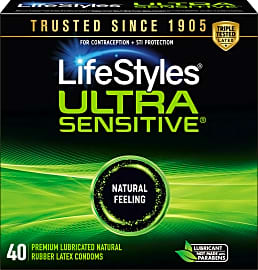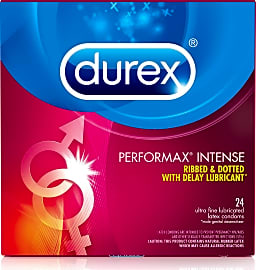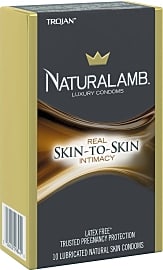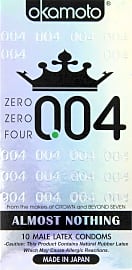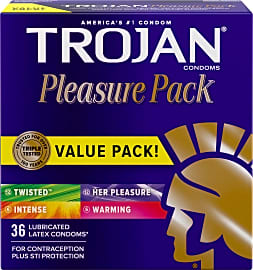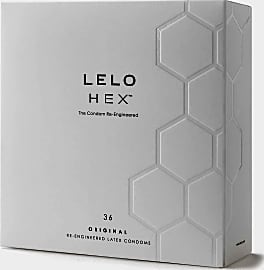The 10 Best Condoms

This wiki has been updated 33 times since it was first published in February of 2017. If you're responsible enough to practice safe sex then you shouldn't be punished by having to use protection that reduces sensations. We found a variety of high-quality condoms that might make you forget you have one on, increasing the likelihood you'll continue to wear them — not to mention convincing your partner you're the greatest lover in the world (well, maybe). When users buy our independently chosen editorial recommendations, we may earn commissions to help fund the Wiki.
Editor's Notes
December 08, 2020:
We had to remove the Shibari Premium, which had become unavailable. We also removed the outdated Durex Performax and replaced it with the more current and popular Durex Performax Intense, which serves the same function as a delay condom that allows men to last longer while increasing sensitivity for women. We removed the Durex Invisible due to a lack of consumer interest, as well as the Glyde Ultra Thin, which many found too expensive.
In addition to Durex Performax Intense, we added the Trojan Pleasure Pack, which includes a variety of differently shaped or textured condoms, and Trojan Ultra Thin, which allow you and your partner to feel especially close and which are best for slower, more gentle sex. Finally, we also added LifeStyles Ultra Sensitive, which use a parabens-free lubricant so as not to irritate women's bodies or throw off their hormone function as parabens sometimes do by mimicking estrogen in the body.
If you and your partner are hoping to enrich an already active sex life, consider our list of the best lingerie.
June 30, 2019:
While this is always a delicate subject, we'll just come right out and say it: a condom will only work if it fits, and that means being honest about the size you need. Some of the options listed here are better for larger men, others for smaller, with still others ideal for the average gentlemen. Don't let myths about size affect your purchase — because trust us, nothing ruins the mood quite like realizing the condom slipped off halfway through the deed.
That's a big reason why we've included My Size, as you can find an option that hugs you tightly without cutting off circulation. This increases pleasure while also decreasing the risk of breakage, saving you years of child support. They're also easy to put on in the heat of the moment, which is always appreciated.
If you're particularly lucky in love, the Okamoto Crown are an excellent choice. They're very inexpensive, so you can always have one handy, even if you and your partner have high libidos. This also makes them a smart choice for anyone who distributes birth control, as you can give your clients a high-quality condom that they won't mind wearing without putting yourself in the poorhouse along the way.
A Brief History Of The Condom
The sheaths were allowed to dry before use and were tied in place with a ribbon, as they only covered the head of the penis.
Though they may seem like a relatively modern invention, condoms have actually been around since at least the 16th century. While they're perhaps most frequently thought of as a method of birth control, condoms were actually developed in response to the first documented syphilis outbreak, which began among French soldiers in Italy 1494 and spread quickly across the continent and to Asia, where it became an epidemic. Syphilis is said to have decimated the population in some areas of China by 1505.
An Italian doctor and anatomist by the name of Gabriele Falloppio wrote of a sheath-like protective covering for the penis he believed could control the spread of syphilis in his seminal 1564 work, "The French Disease." Falloppio conducted clinical trials of his proto-condoms with 1,100 men in order to prove his hypothesis. His design consisted of a linen covering soaked in a chemical solution that presumably made it impermeable to fluids. The sheaths were allowed to dry before use and were tied in place with a ribbon, as they only covered the head of the penis. According to Falloppio, none of the men in the trial contracted the dreaded disease.
Penile coverings similar to those described by Falloppio quickly caught on throughout Europe. The first documented indication that they could be used for birth control rather than curtailing disease came in the form of a condemnation from the Catholic church in 1606. Sixty years later, the English Birth Rate Commission attributed a decline in the British fertility rate to the use of 'condons,' the first known use of the term which gave way to the name we know today.
Around this time in the 1600s in England, animal intestines supplanted linen as the material of choice for condom production. These were called "animal skin" and tended to be full-length, more closely resembling the condoms of today, which also reduced the likelihood that they would slip out of place during use.
While condoms increased in popularity throughout the 1700s, many detractors sought to have them banned. Some critics stood on moral and religious ground, while others like the English physician Daniel Turner felt they were emasculating and encouraged unsafe sexual behavior. Still, availability skyrocketed, and condoms in a variety of sizes and materials could be found for sale at pharmacies, bars, and theaters throughout Europe.
Condoms reached American soil in the 1800s, just as linen fell out of fashion due to being more expensive and less comfortable than its animal-based counterparts. Around this time, birth control advocates began traveling the United States and Europe, selling condoms after their lectures. By the 1840s, they were being advertised in British magazines, and 1861 saw the first condom advertisement in the New York Times.
Rubber condoms were developed in 1855, the first of which were reusable, custom fitted, and had to be ordered by a physician. By the end of the 19th century, condoms were the most popular method of birth control in the Western world.
While processes were developed in the early 1900s for making thinner rubber condoms, the advent of latex in 1920 by the American Youngs Rubber Corporation changed the industry forever. Latex condoms were much easier and cheaper to produce than their traditional rubber forbearers, and remain the most popular option to this day.
What To Know About Condom Materials
Today, somewhere between six and nine billion condoms are sold each year. While the vast majority are latex, there are plenty of popular alternatives available. Before you choose the right condoms for you, it's important to understand their various pros and cons.
Today, somewhere between six and nine billion condoms are sold each year.
Latex condoms are by far the cheapest and most widely available type on the market. Latex is actually a liquid solution of rubber suspended in water, and is one of the most elastic natural substances in the world, which is part of what makes it so durable. That being said, is not without its faults. Latex allergies are quite common, though a recently developed latex variant called Vytex has 90 percent of the reaction-causing proteins removed. Latex is also significantly weakened by oil-based lubricants, which include baby oil, skin lotion, and petroleum jelly.
Synthetic plastic condoms were developed largely for those with latex allergies. Most are made of polyurethane, though AT-10 resin and polyisopropene, a synthetic latex, are also used. Plastics tend to be less stretchy than latex and thus more prone to breakage, but they can also be made thinner without compromising their strength.
The third popular category of condoms is often referred to as "lambskin," though they are actually made of sheep intestines. While these are often considered the most comfortable, natural-feeling option, they tend to be expensive enough to be considered a luxury item. They are also not as effective in preventing the transfer of sexually transmitted diseases as other types, though they do work for preventing pregnancy.
Condom Best Practices
It's important to note that, while condoms have come a long way since the linen caps worn in the 1500s, they are not 100 percent effective. Even among those who properly use condoms every time they have sex, a 2 percent pregnancy rate can be expected.
That being said, condoms are generally held responsible for ending the AIDS epidemic, and they do at least decrease your chances of contracting most STDs when used correctly.
Condoms on their own are also not sufficient for protecting yourself against sexually transmitted diseases. Though they were invented to stop the spread of syphilis, they cannot prevent exposure to diseases like herpes and human papillomavirus when symptoms are present on areas of the skin not covered by a condom. That being said, condoms are generally held responsible for ending the AIDS epidemic, and they do at least decrease your chances of contracting most STDs when used correctly.
For the best rate of success in preventing pregnancy and the spread of disease, it's important to use condoms properly. This includes opening its package carefully to avoid tearing the material as well as ensuring that no air is trapped in its tip, which could cause it to rupture. It's also essential not to reuse condoms, and to ensure that they stay firmly in place until intercourse is complete.




